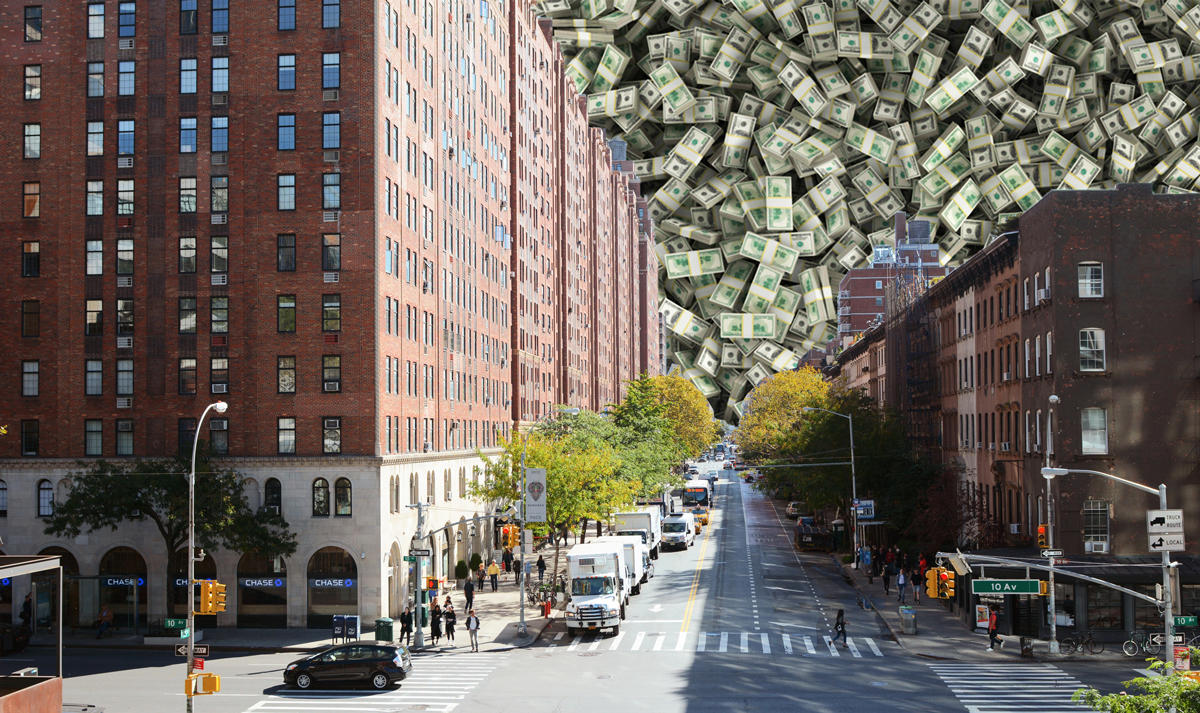Trending
Are billion-dollar listings the new normal for Chelsea?
Neighborhood has seen massive deals this year for Chelsea Market and Terminal Stores

Google made New York history in March with its $2.4 billion purchase of the Chelsea Market building, the city’s second priciest sale of a single building ever. This week, Chelsea saw another massive deal thanks to L&L Holding Co. and Normandy Real Estate Partners’ roughly $900 million buy of Terminal Stores.
Brokers say that while deals of such scale will remain rare — simply because the number of massive buildings in Chelsea is in short supply — they still don’t see deals in the submarket slowing down.
“There aren’t that many, let’s call them ‘whales,’ left,” said Eric Anton, a broker at Marcus & Millichap. “But there are quite a few mid-sized buildings that could be acquired by tech companies and renovated.”
CBRE’s Darcy Stacom — who along with colleague Bill Shanahan — represented sellers GreenOak Real Estate and Waterfront New York in the Terminal deal, said that most of the buildings in the neighborhood range from 150,000 to 350,000 square feet, making it “hard to become a billion-dollar transaction.”
Even if sellers at other buildings are able to convince buyers to pay in the range of a few thousand dollars per square foot, most deals would still likely cap out at around $700 million, Stacom said.
She pointed to the Starrett-Lehigh Building as one of the few remaining properties in Chelsea that could trade for a price comparable Terminal Stores. The 2.3 million-square-foot building sold for $920 million in the summer of 2011, but Stacom said another such deal in the near future is a remote possibility.
“That’s owned by RXR, and they brought in Blackstone a few years back,” she said.“So, I don’t think they’re planning on doing anything there.”
Instead, smaller deals are a more sustainable trend for the neighborhood, Anton said, citing the amount of loft buildings in the west teens and 20s that could easily work as the corporate headquarters for tech companies in need of about 50,000 to 70,000 square feet.
“Oftentimes, the zoning prohibits residential conversion,” he said, “so it’s a natural evolution from lofts in 100-year-old buildings that were manufacturing buildings into corporate office space.”
That potential for conversion is part of what drives up price. In the case of Terminal Stores, L&L and Normandy, which both declined to comment on the deal, paid triple the property’s last valuation ($300 million in 2014).
But such a huge jump in value is uncommon and only happens there’s a chance for a dramatic conversion, according to Brian Strout, a senior vice president at City Center Real Estate.
The new owners are planning to renovate the interiors of Terminal Stores and convert 500,000 square feet of storage space into office. The building currently houses offices for companies including Uber and L’Oréal.
“They see an opportunity to significantly reposition the asset, versus taking a building that was what it was before and just raising the rent slightly,” Strout said.
Zev Holzman of Savills Studley said he would not be surprised to see more deals like this happen in Chelsea moving forward, although he did not have any particular properties in mind that seemed poised to sell for around $1 billion. He said the property stock in Chelsea lent itself to these types of large deals, especially given the strong market for creative office space, as it is a neighborhood with several older buildings that have large floor plans.
“It’s an area where those types of assets exist more than others,” he said. “Midtown has none of that type of product.”
Stacom said L&L and Normandy were mainly attracted to Terminal Stores because of the amount of potential it had for changes and improvements.
“I could definitely see them creating a series of boutique buildings that are tied together with common amenities,” she said. “I think there’s so much that they could do.”
But all in all, Strout was skeptical that the Chelsea Market and Terminal Stores deals represent a sea change in the neighborhood. He pointed to L&L’s Ironworks building, which the company put on the market last year for $200 million. A deal never materialized, and instead, L&L recently launched marketing and leasing campaigns for the property — a sign that not every major deal in Chelsea goes through, Strout said.
“Is it a trend?” he asked. “Or is it just that you had willing buyers and willing sellers to transact on two large properties within a short time frame?”




